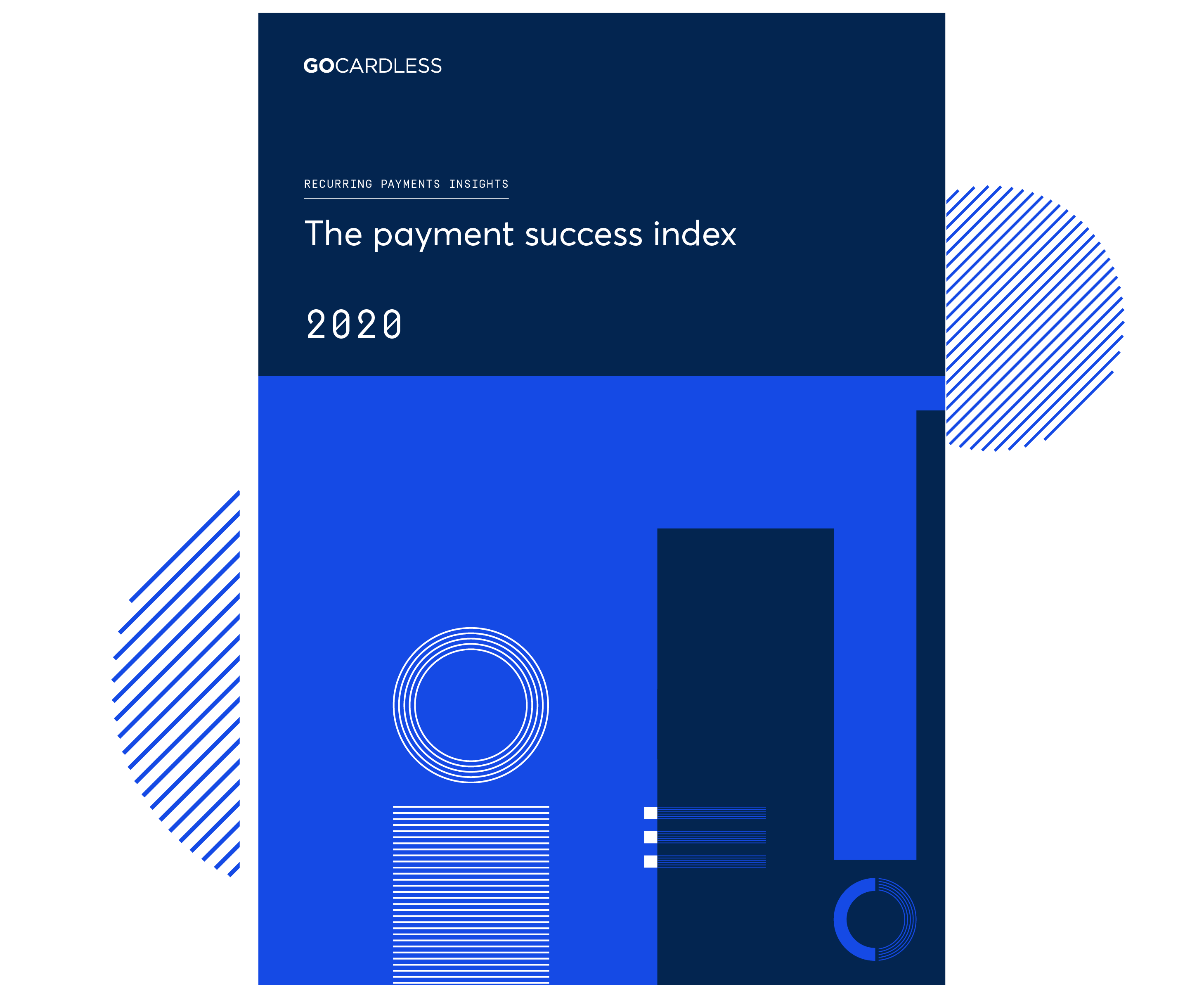Last editedOct 20212 min read
As part of a subscription business, you care about a handful of metrics (e.g. churn rate, customer lifetime value) and every action you take should be tied back to these numbers. So, how can thinking about your payment strategy impact these key metrics?
Specifically, how can Direct Debit impact the numbers you care most about and why should you prioritise offering it as a payment method, over credit/debit cards and other alternative payment options?
In this guide, we explain the relationship between Direct Debit and the following three subscription success metrics:
• Churn - The rate at which a company loses subscribers or revenue due to subscription cancellations (we’ll be looking, more specifically, at involuntary churn).
• Customer lifetime value (CLV) - The average revenue generated by a customer before a subscription is cancelled.
• Monthly recurring revenue (MRR) - A measure of your normalised, monthly subscription revenue (excluding one time payments).
These metrics allow businesses to measure success in the core areas of value, growth and retention
Here, we take a closer look at how Direct Debit can drive these metrics in the right direction.
Churn: the rate at which a publication loses subscribers or revenue due to cancellations
Churn is, arguably, one of the most important metrics that a mature subscription business will monitor. It is also the metric that Direct Debit can have the most significant impact on.
There are two different types of churn:
• Voluntary - churn caused by customers actively cancelling their subscriptions
• Involuntary - churn caused by payment failures, such as from expired, cancelled or lost cards
According to Price Intelligently, involuntary churn makes up between 20-40% of your overall churn.
Due to the bank-to-bank nature of Direct Debit, failure rates are significantly lower than those seen with recurring card transactions. This is because, unlike cards, bank accounts do not expire, cannot be physically lost and are unlikely to be stolen.
It is estimated that failure rates on card can range anywhere from 10 - 25% a month. Customers who use Direct Debit through GoCardless have an average payment failure rate of 2.9%, with some merchants as low as 0.5%. Failure rates can further be reduced by intelligently retrying payments. We found on average, businesses can recover 76% of payments that initially fail with our intelligent payment feature, Success+.
So, as a result, Direct Debit helps to significantly lower involuntary churn.

The payment success index 2020
We analysed 55,000 payments to bring you the most comprehensive insights on payment failure rates. Download the report and see how your brand compares.
Consider this:
A business that collects recurring card payments from its customers and has a monthly churn rate of ~6%.
30% of that total churn will be involuntary - that is, the result of administrative failure of card payments. So this business is needlessly losing 1.8% of its customers every month.
Using Direct Debit improves payment success rate, reducing failures from around 10% to 2.9%.
Even with a conservative estimate, this would allow a typical subscription business to reduce involuntary churn from 1.8% to 0.36% - and overall churn from ~6% to ~4.5%.
Lifetime value (LTV): the average revenue generated by a customer before they churn
The lifetime value of your customer base is directly related to your churn, so by reducing churn, you can help to maximise LTV. A similar metric, subscription cycles, is a similar retention measurement.
Using Direct Debit helps to eliminate involuntary churn (see 'churn' section above) and ultimately increase lifetime value.
Monthly recurring revenue (MRR): A measure of normalised, monthly subscription revenue (excluding one time payments)
Payment preferences vary across Europe. Offering alternatives to card payments can help you to capitalise on local preferences.
Direct Debit accounts for 20% of all electronic payments made across Europe and 74% of recurring payments in the UK. A YouGov survey showed the different attitudes to subscription payments across Europe, where Direct Debit proved popular in France, Sweden and Spain.
Adding Direct Debit to your payments mix can help you to maximise reach in these markets and improve conversion. On top of this, more customers using Direct Debit will help to reduce involuntary churn and maximise MRR.
Since Direct Debit reduces failed payments and churn, it can also help decrease the amount of time customer success and support teams spend dealing with payment-related queries, as well as time spent chasing customers to renew their details.
Thinking about adding Direct Debit to your subscription payment offering? Fill out the form below and one of our Direct Debit experts will be in touch.
Reduce transaction costs and involuntary churn
Discover the smarter way to collect recurring payments - with GoCardless.





